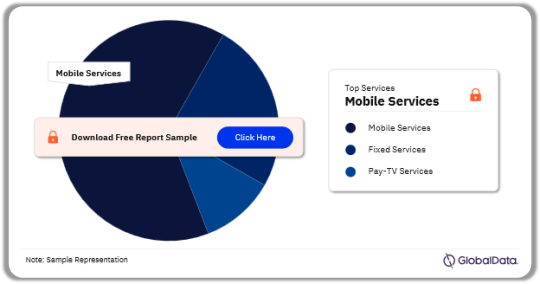#Telecom Operator
Explore tagged Tumblr posts
Text
Vi Teams Up With AST SpaceMobile Amid Starlink’s Entry Into India, Shares In Focus
Last Updated:June 19, 2025, 08:05 IST VI shares gain attention after partnering with AST SpaceMobile for satellite connectivity in India, aiming to enhance mobile coverage. The satellite-based service could be a game changer for telecom access in India’s rural pockets, forest areas, deserts, and hilly regions. Vi Share Price: Telecom operator VI shares are in the spotlight on Thursday, after…
#AST SpaceMobile#Digital India mission#satellite connectivity#space-based cellular technology#telecom operator#universal mobile coverage#VI shares#Vodafone Idea
0 notes
Text
Open APIs and Their Role in Telecom Innovation

The telecom industry has undergone a massive transformation over the last few years, evolving from traditional voice and messaging services to a world dominated by data-driven applications, cloud services, and the Internet of Things (IoT). This shift has opened the doors to more innovation, collaboration, and customer-centric solutions. A major catalyst for this innovation has been the adoption of Open Application Programming Interfaces (Open APIs). These Open APIs are reshaping the telecom industry by enabling greater interoperability, fostering collaboration, and accelerating the creation of new services and applications.
What are Open APIs?
Open APIs are publicly accessible interfaces that allows developers to tap into specific functionalities or data from a service or application. Unlike proprietary APIs which are restricted to a specific partner or internal use, Open APIs are designed for a wider range of audiences, fostering innovation and collaboration. This enables external developers to build new applications and services.
In the modern telecom landscape, Open APIs operate across multiple domains, it acts as a bridge facilitating collaboration between operators, service providers, and developers. For instance, a billing system may provide APIs specific to the telecom domain while simultaneously leveraging Open APIs from the financial domain, such as those of payment gateways, to facilitate seamless transaction. This interconnected approach drives efficiency and creates a flawless service experience.
The Role of Open APIs in Telecom Innovation
Ensuring Effective Interoperability
Open APIs facilitate seamless integration across different systems and platforms. In the telecom industry, this translates into more efficient collaboration between various network components, services, and applications. For instance, APIs can ensure interoperability between different network management systems, leading to streamlined operations and better resource utilization.
Reducing Time to Market
Traditionally, telecom companies had to build everything in house, resulting in long development cycles for new products and services. By providing standardized interfaces, Open APIs significantly reduce the complexity and time required to develop new services. Instead of building applications from scratch, telecom operators can offer APIs to developers, who can then build value- added services quickly. This accelerates the time-to-market for new products and allows telecom companies to stay competitive in a fast-evolving digital landscape.
Driving 5G Innovation
The advent of 5G technology has opened doors to innovation like low latency applications and IoT. Telecom APIs such as those provided in the CAMARA project enables external systems and applications to directly leverage advanced network capabilities offered by telecom operators. These APIs play a critical role in enhancing service delivery, improving user experience, and enabling seamless integration between telco networks and third-party systems.
Fostering Collaboration and Innovation
Telecom innovation is no longer confined within the walls of telecom operators. Open APIs create opportunities for collaboration between other industries as well, such as healthcare and media. By opening their platforms, telecom companies can tap into a broader ecosystem of innovators who can contribute new ideas and solutions. This collaborative approach helps create new revenue streams, which might not have been possible within the confines of a single organization.
Enabling Customization and Personalization
Open APIs also enable s telecom operators to offer more customized and personalized services to their customers. By integrating with customer data platforms and analytics tools, telecom operators can use APIs to deliver tailored offers, recommendations, and real-time service updates based on individual customer behaviour.
Driving Cost Efficiency
Open APIs enables telco operators to cut costs by optimizing resource utilization and streamlining the integration of new technologies. By leveraging existing APIs, operators can avoid the need to develop custom solutions from scratch, saving both money and time. Moreover, APIs can automate various processes, enhancing operational efficiency even further.
Real World Examples of Open APIs
TM Forum’s Open APIs
TM Forum is a global industry association for telecom operators. TM Forum’s Open API program is a global initiative aimed at enhancing interoperability and connectivity within the telecommunication industry. These REST-based, technology-agnostic APIs support various digital services like IoT,Smart Health, and Next Generation OSS/BSS. The program is backed by a large developer community and industry experts, ensuring continuous improvement and widespread adoption. TM Forum’s Open APIs play crucial role in driving digital transformation and innovation.
Twilio
Twilio’s APIs enable developers to integrate communication functionalities like SMS, voice, video, email, and authentication into their applications. These REST-based APIs are flexible, easy to use, and support multiple programming languages with comprehensive SDKs and documentation. Businesses can quickly build and scale communication solutions, automate processes, and enhance customer engagement across various channels.
AT&T’s API Marketplace
AT&T’s API Marketplace is a dynamic platform designed to empower developers and businesses by providing a suite of prepackaged telecommunication software applications and APIs. These tools enable seamless integration of real-time communication features. The marketplace also supports various industry verticals, offering tailored solutions to meet specific needs. AT&T’s API Marketplace is a valuable resource for driving digital transformation and improving the efficiency of communications services.
Challenges and Considerations
Security and Privacy
When APIs expose network capabilities and data to third parties, security becomes a paramount concern. Operators must implement robust security measures to ensure secure API access and prevent unauthorized usage. This involves employing advanced authentication and authorization protocols, encrypting data in transit, and at rest. By adopting a comprehensive security strategy, operators can safeguard their network and maintain the integrity and confidentiality of their data.
Standardization
The lack of standardized APIs can lead to fragmentation and interoperability issue. Industry-wide efforts, such as those led by TM Forum, are crucial in promoting standardization and ensuring that APIs are widely adopted.
Governance
Effective governance is essential to managing APIs, including versioning, deprecation, and access control. Telecom operators need to establish clear policies and procedures for implementing, monitoring, and governing API usage.
Conclusion
Open APIs have become a cornerstone of modernization in the telecom industry, offering unprecedented opportunities to enhance customer experiences, streamlining operations, and driving innovation. The telecom industry is increasingly leveraging APIs from external systems like CRM, Billing, Finance, Weather Forecasting, and Data Analytics. Integrating these APIs fosters innovative solutions, accelerates service delivery, and improves operational efficiency. For instance, CRM and Billing APIs enhance customer management and billing processes, while finance-based APIs automate transactions. Weather forecasting APIs enable telcos for proactive customer communication about adverse weather conditions, enhancing satisfaction and trust. Open APIs also reduce the time to implement new services, allowing telecom operators to remain agile. As the industry evolves with 5G and IoT, Open APIs will be at the heart of this transformation, empowering telcos to innovate faster, collaborate effectively, and deliver greater value to customers. Telecom companies embracing cross-domain Open API integration will lead in this new era of connectivity.
To know more visit: Covalensedigital
Visit: Covalensedigital LinkedIn
#Telecom Open APIs#Telecom#cloud services#IoT#5G#Telecom API#Telecom Operator#Billing#CRM#BSS#API Marketplace
0 notes
Text
#Saelig Company Inc#telecom operators#Harogic#SpectrumAnalyzer#RFTesting#Telecom#DefenseTech#FieldInstrumentation#WirelessTech#RealTimeAnalysis#AlanLowne#ElectronicsInnovation#electronicsnews#technologynews
0 notes
Text
NITRA, ALTON to host stakeholders on CNII & Sustainability discuss
As the telecom industry grapples with the challenge of how to secure its infrastructure and ensure that investments in the telecoms space are protected, following the recent Critical National Infrastructure (CNI) status granted it by the Federal Government, the Nigeria Information Technology Reporters Association (NITRA) has called for an all-stakeholder approach. NITRA, the umbrella Association…
0 notes
Text
NCC Approves 50% Tariff Increase for Telecom Operators in Nigeria
The NCC has approved a 50% tariff increase for telecom operators, aiming to balance consumer protection and industry sustainability while addressing operational challenges. The Nigerian Communications Commission (NCC) has approved a 50% tariff increase for telecommunications operators, addressing the industry’s operational challenges. This decision is part of its regulatory mandate to balance…
#Digital Economy Growth#NCC Tariff Adjustment#Nigerian Communications Act 2003#Telecom Industry Updates#Telecom Operators in Nigeria
0 notes
Text
Qatar Telecom Services Market: A Comprehensive Overview
The telecom services market in Qatar has been growing rapidly, fueled by technological advancements, a rising population, and a strong push towards digital transformation. As one of the most connected countries in the Middle East, Qatar offers a dynamic and competitive telecom landscape, making it an attractive market for investors and service providers.

Key Drivers of Growth
Digital Transformation Initiatives Qatar’s government has been proactive in promoting digital transformation as part of its National Vision 2030. This initiative aims to enhance the country’s infrastructure, including robust telecom networks that support smart cities, e-governance, and advanced connectivity solutions.
5G Deployment Qatar is among the global leaders in rolling out 5G technology. Both Ooredoo and Vodafone Qatar have aggressively expanded their 5G networks, providing ultra-fast internet and low-latency connectivity that supports emerging technologies such as IoT, AI, and autonomous vehicles.
Rising Demand for Mobile and Broadband Services With a growing population and increasing smartphone penetration, the demand for mobile and broadband services continues to soar. High-speed internet access has become a necessity for both businesses and individuals, driving the growth of the telecom sector.
International Events Qatar’s hosting of international events, such as the FIFA World Cup 2022, has further spurred investments in telecom infrastructure. These events have necessitated the development of world-class communication networks to accommodate a global audience and ensure seamless connectivity.
Key Players in the Market
Ooredoo Qatar As one of the leading telecom providers in the region, Ooredoo offers a wide range of services, including mobile, broadband, and enterprise solutions. The company is at the forefront of 5G deployment and digital innovation.
Vodafone Qatar Vodafone Qatar is a key competitor in the market, providing high-quality telecom services to both consumers and businesses. The company has also invested heavily in expanding its 5G network and enhancing customer experience.
Market Trends
Growth of IoT The adoption of IoT devices is on the rise in Qatar, driving the need for reliable and secure connectivity. Industries such as healthcare, transportation, and retail are leveraging IoT solutions to improve efficiency and service delivery.
Focus on Cybersecurity As digitalization accelerates, cybersecurity has become a critical concern. Telecom companies in Qatar are investing in advanced security solutions to protect networks and user data from cyber threats.
Emerging Cloud Services Cloud computing is gaining traction, with businesses in Qatar adopting cloud-based solutions for scalability and efficiency. Telecom providers are partnering with global cloud service providers to offer tailored solutions to local enterprises.
Challenges in the Market
Intense Competition The telecom market in Qatar is highly competitive, with major players constantly innovating to capture market share. This competition can drive down prices, impacting profit margins.
Regulatory Environment While the regulatory framework in Qatar supports innovation, navigating compliance requirements can be complex for new entrants.
Future Outlook
The future of Qatar’s telecom services market looks promising, with continued investments in 5G, smart cities, and digital infrastructure. As the country moves towards becoming a regional tech hub, the telecom sector will play a pivotal role in enabling this transformation.
Conclusion
Qatar’s telecom services market is a dynamic and fast-evolving space, offering significant opportunities for growth and innovation. By staying ahead of trends and addressing challenges, telecom companies can capitalize on the country’s vision for a connected and digitally empowered future.
Buy the Full Report to Gain More Information on the Qatar Telecom Services Market Forecast, Download a Free Sample
0 notes
Text

#Telecom Operations Management Market#Telecom Operations Management Market Share#Telecom Operations Management Market Size#Telecom Operations Management Market Research#Telecom Operations Management Industry#What is Telecom Operations Management?
0 notes
Text
#fttx#fiber to x#fiber to anywhere#fiber to home#network optimization#fiber planning#fiber management#fiber network planning#lepton software#lepton maps#telecom operators#isps#csps#maps#data#location#fiber#gis#inventory management#network
0 notes
Text
Airtel Q4 Results: Net Profit Zooms 432% To Rs 11,021 Cr, Rs 16 Dividend Announced - News18
Last Updated:May 13, 2025, 18:00 IST Airtel Q4 FY25: Telecom operator saw an improvement in Average Revenue Per User (ARPU) to Rs 245 in Q4 FY25 against Rs 209 in Q4 FY24. Bharti Airtel Limited announces its Q4 results. Airtel Q4 FY25 Results: Sunil Bharti Mittal-led telecom operator Bharti Airtel reported on Tuesday that its net profit for the quarter ended March 31, 2025 stood at Rs 11,021…
#Airtel ARPU#Bharti Airtel growth#Bharti Airtel net profit#Bharti Airtel Q4 FY25 Results#Bharti Airtel revenue#Q4 FY25 financial results#Sunil Bharti Mittal#telecom operator
0 notes
Text
5G trends driving telecom operators

5G is fast becoming a reality with countries across the world adopting it at a faster pace.
In the telecom world, implementation of 5G and related emerging tech like IoT has been a double-edged sword. It brings forth its own set of benefits and challenges for telecom operators.
To adopt 5G technology efficiently, there has been a major shift to cloud platforms & microservices architecture. This is further driving decision makers to make heavy investments in automation and digitalization of their business processes. CIOs must have a strong digital strategy in place to unleash the full potential of 5G.
Telecom experts predict that most of the telco enterprises are looking forward to seizing the opportunity of 5G
The top 3 5G trends that will drive telco businesses:
1) Private 5G as a standard network choice: Cloud computing platform has launched a new managed service that has been helping enterprises set up and scale private 5G mobile networks in their facilities within days, instead of months.
2) Enhanced broadband experience: There are new entrants in the service provider space, especially cable companies that are driving network innovation and will be able to eventually launch local area 5G networks of their own.
3) Massive connectivity: Across the globe, operators are seeking new and improved ways to monetize their networks. This may lead to business model innovations coming from multiple industries. Telco operators and their partners will tailor their service offerings to capitalize on emerging technology such as the Internet of Things (IoT), Artificial Intelligence (AI), Unmanned Aerial vehicles (UAVs), robotics, smart cities, and many more.
What can be the right strategy to offer 5G enabled services?
Moving network capabilities to the cloud to make necessary improvements in network performance and become an effective innovation partner.
Most important drivers for your partner ecosystem strategy:
1. Deliver a wide range of 5G services
2. Support new business models
3. Expansion into new verticals
4. Diversify revenue streams
5. Improve customer engagement
As we enter the 5G era to support and enable the forthcoming wave of innovative 5G-based services, telecom companies need to adopt BSS and OSS architectures that are more flexible, agile, and connected.
Nearly 72% of 5G revenue growth depends on the transformation of OSS/BSS, according to TM Forum’s report. Capture all the opportunities of the 5G wave!
Choose the right digital BSS platform. Choose Covalensedigital!
Visit: Covalense Digital
Read blogs on 5G services, Telco BSS, and SaaS BSS for telecom transformation and innovative digital solutions.
For more Blogs
0 notes
Text
#Cellular Operators Association of India - COAI#digital communications#telecom industry#Union_Budget 2024-25#powerelectronics#powermanagement#powersemiconductor
0 notes
Text
NCC approves 50% tariff increase for telecom operators
The Nigerian Communications Commission (NCC) has granted an approval to telecommunications operators in the country to increase their tariff for voice call, data, and SMS by not more than 50%. The Commission in a statement signed by its Director of Public Affairs, Dr. Reuben Muoka, said the approval was granted pursuant to its power under Section 108 of the Nigerian Communications Act, 2003 (NCA)…
0 notes
Text
#Cellular Operators Association of India#Telecom#UnionBudget2024_2025#electronicsnews#technologynews
0 notes
Text
A Recap of IPLOOK's Impressive Presence at the Premier MVNO Event

The dynamic city of Brussels played host to the highly anticipated MVNOs World Congress 2024, bringing together key players from the telecommunications industry. The event served as a platform for discussing innovations and advancements shaping the MVNO landscape, with themes ranging from emerging technologies, to evolving MVNO business strategies.
Among the lineup of exhibitors, IPLOOK shone bright, leaving a lasting impression with its core network solutions. Reflecting on the industry's evolving landscape, Erdogan Aybogan, Senior Consulting Manager of IPLOOK, shared, "This event, focusing on MVNO ecosystem, offers an excellent opportunity to exclusively attract MVNO-type clients."
The IPLOOK team had insightful conversations with operators throughout the event. Here're two key takeaways from IPLOOK:
TAKEAWAY 1: A Thriving Industry with New Players and Potential Opportunities Experts' keynotes highlighted the MVNO market's growth trajectory, with a projected valuation of $80 billion and a forecasted 8% CAGR, reaching $130 billion by 2030. Compared to last year's event, a surge of new players, including vendors, service providers, and mobile virtual network operators, was observed. Alejandro Muñoz, Senior Sales Manager of IPLOOK, emphasized, "The MVNO market is growing. However, MVNOs are more cautious when seeking solutions, prioritizing providers with proven success stories. To address this, IPLOOK invited existing MVNO clients to share their firsthand experiences using IPLOOK's core network products."
TAKEAWAY 2: MVNOs Expand Their Ambitions with Customized Core Networks Hyper-personalization emerged as a recurring theme during networking sessions with MVNOs, as experts underscored the importance of network service customization as a differentiator. Many light MVNOs expressed ambitions of becoming full MVNOs, seeking solution providers like IPLOOK to build their own 4G networks, which include EPC, PGW, BSS/OSS, and IMS. IPLOOK's flexible core network solutions and comprehensive portfolio of core network elements set it apart at the event, empowering MVNOs to achieve personalization and provide enhanced network experiences for their users.
See you at MVNOs World Congress 2025 Thanks for engaging with IPLOOK at MVNOs WC Brussels 2024. We're thrilled by the connections made and look forward to future collaborations. The bustling atmosphere was a testament to the industry's commitment to pushing boundaries and driving growth. See you at MVNOs WC 2025!
0 notes
Text
SIDBI Venture Capital Invests in Covalensedigital’s Flagship Platform Csmart

Commenting on the occasion, Mr. Sreenivas Peesapati, Founder & CEO said “We founded this company to address the MSME segment by making the solutions lightweight and affordable. Now we are moving to the next level in communications sector by making our Csmart platform available on SaaS models to take this to the global market. We are thankful to the team at SVCL for believing in our vision and backing us on our expansion plans”.
CEO of SIDBI Ventures, Mr. SP Singh quoted “We are happy to partner with Covalensedigital, a niche company which is trying to develop a unique platform. We believe that their focus and deep domain knowledge will help them to win the market. This is our first investment out of “Ubharte Sitaare Fund”, for MSME’s focused on scaling up in the export markets. Wishing them all the best".
0 notes
Text

Enhance Your SMS Campaigns with SMSGatewayCenter’s Connectivity Channels
Find out how to maximize the effectiveness of your bulk SMS campaigns with SMSGatewayCenter's dependable SMPP Channel, adaptable API, and user-friendly Web Interface. Find out more about our robust connectivity options for successful SMS marketing.
#Bulk SMS#SMS marketing#SMPP Channel#SMS API#Web Interface#SMSGatewayCenter#SMS campaigns#SMS connectivity#SMS automation#telecom operators#SMS aggregators
1 note
·
View note